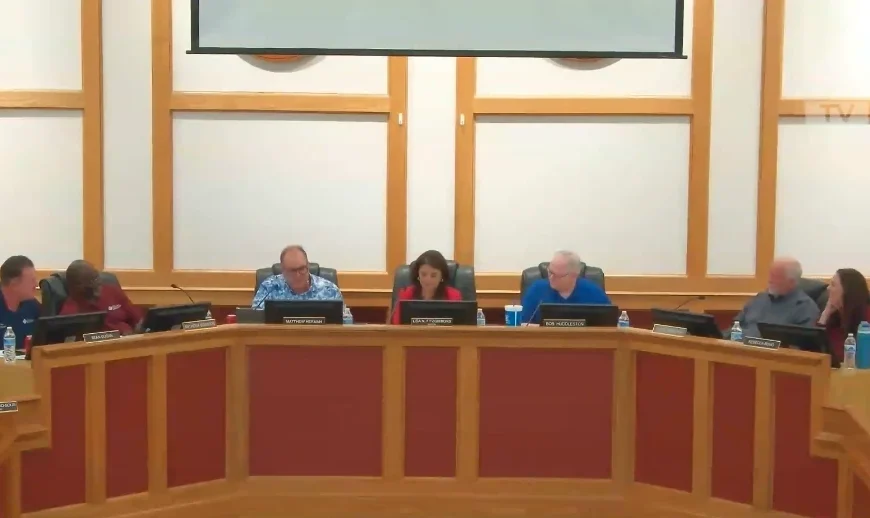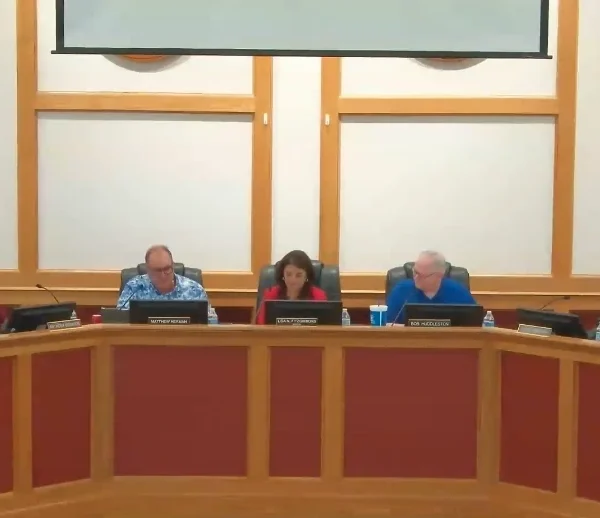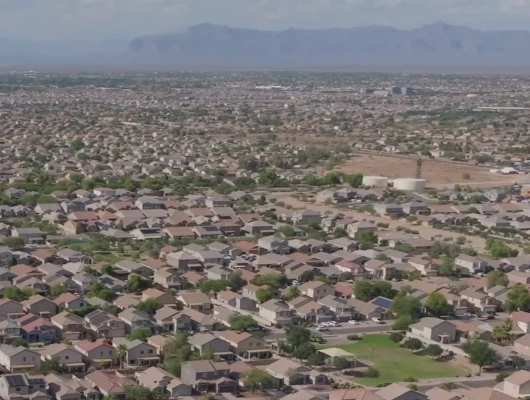Local nonprofit leader highlights 400% increase in food assistance demand as city seeks balance between public safety and compassion
The Casa Grande City Council held a study session on May 19 to discuss a proposed ordinance that would prohibit camping on public property, while raising questions about enforcement and notification of the homeless population.
Nonprofit Leader Shares Frontline Perspective
Jerry Scheiber, President of the Casa Grande Conference of the St. Anthony of Padua Conference Society of St. Vincent de Paul, addressed the council during public comments, providing stark statistics about the growing crisis. Scheiber, who has led the organization since March 2021, shared critical data about his organization’s expanding operations.
“We provided about 660 grocery carts of food… in addition, the housed also received approximately 700 food boxes,” Scheiber told the council. “The unhoused weekly visitors received approximately 600 weekly snack bags.”
As Scheiber explained, “The unhoused who come weekly, as opposed to the housed, who only come once a month” to the food pantry.
The total value of food distributed in April alone exceeded a quarter million dollars, Scheiber reported. When compared to five years ago, the growth has been dramatic. “The growth has been approximately 200 to 400% in those categories,” he said.
St. Vincent de Paul Casa Grande operates a food pantry five days a week for three and a half hours each day. In 2024, the organization made 9,290 household visits, served 30,210 household members, handled 4,160 unhoused client visits, and helped over 600 families through food drive-thru events.
Underlying Causes and Community Impact
Scheiber offered his perspective on the underlying causes of homelessness based on daily interaction with those in need. “I believe one of the sources is the breakup of the family unit. It’s no longer as functional as it was 60, 70 some years ago, and we’re seeing the effect of that today,” he explained.
He continued: “So what’s one of the factors that causes the breakup of the family unit? In my opinion it’s the lack of religious focus. They have no guide.”
These factors, Scheiber argued, have led to widespread addiction and homelessness due to employment and economic challenges. He expressed willingness to work with the city on future solutions, particularly welcoming the two new staff members the city plans to add to address homelessness issues.
The Ordinance Details
The proposed ordinance addresses multiple aspects of public space usage. Key provisions include prohibiting camping or camp-related activities on public property and establishing a 500-foot buffer zone around schools, childcare facilities, shelters, and parks where camping would be forbidden.
The ordinance also prohibits washing one’s body or belongings in fountains, splash pads, or lakes. Additionally, it includes a permitting system for specific activities. The Director of Community Services may issue permits for youth organizations and schools to camp in open spaces, while the City Manager may issue permits for camp facilities connected to special events or grant temporary permits for camp facilities.
Property removal procedures require 24-hour notice before city workers can remove belongings from public areas. Once removed, the city will store items for 10 days before disposal.
City Attorney Brett Wallace explained that violations carry a maximum fine of $500 for Class 3 misdemeanors, though actual penalties are typically much lower. “We almost never are assessing anything close to that,” Wallace noted, emphasizing that citations represent a last resort.
The ordinance also addresses park ramadas specifically, limiting their use without reservations to two consecutive hours, with use considered consecutive if occurring within the same six-hour period.
Enforcement Concerns and Community Notification
Councilmember Sean Dugan raised important questions about how the homeless population would learn about the new ordinance. “I got a question on how the general public will be notified of this ordinance. Like, I’m sure people are watching at home, but people who don’t have access to internet or are unaware of new laws being passed. How is that population gonna be notified?” Dugan asked.
Deputy City Manager Steven Weaver responded that the city would use standard notification methods and work with the Public Information Officer team to spread awareness through nonprofit groups. City Attorney Wallace added that all ordinances are published in the newspaper and emphasized the goal of educating the public through multiple channels.
The city plans to implement a “warn and inform” policy rather than immediately issuing citations. Wallace noted they are considering either a delayed effective date or having officers warn and inform for a period before beginning enforcement.
Councilmember Anthony Edwards, who attended the stakeholder meeting, confirmed there would be a 30-day grace period for education before enforcement begins, with the ordinance potentially becoming effective in July or August.
Stakeholder Support and City Resources
Mayor Lisa Navarro Fitzgibbons reported that a May 12 stakeholder meeting at City Hall included representatives from Seeds of Hope, Casa Grande Alliance, Horizon Health & Wellness, CAHRA/CG Helps, CHIP, Salvation Army, and Casa Grande Police. “We were surprised that all of them there in that room were supportive and that they understand why we’re at this point,” the mayor said.
The mayor acknowledged the ordinance addresses citizen complaints about park safety and accessibility. “We are getting constant complaints that they’re not able to use some of our parks and they’re not safe,” she explained. However, she recognized the complexity of the issue: “We know some people may move out of the park, and so where are they gonna go? So what are we doing as a city to help that?”
The city is developing a comprehensive approach beyond the ordinance. Starting July 1st, one existing employee will help address issues with the unhoused and unsheltered, while another person in code enforcement will dedicate a portion of their duties to these issues.
The mayor outlined potential future solutions being discussed, including exploring property for a camp location or establishing a shelter, though she acknowledged these are not immediate solutions. “A shelter, yes, people talk about a shelter, but we don’t think that’s going to happen in the near future. So we talked about some other things, whether it’s a piece of property where we can have, like a camp location or whatever,” the mayor explained. The city plans to revisit its strategic plan and form an action group to explore various ideas for addressing homelessness comprehensively.
Focus on Transition and Support
Councilmember Edwards emphasized the collaborative approach emerging from stakeholder discussions. “We talked about transitioning. So helping them, those individuals that would like help, because some of them don’t want it. But there’s others that do,” Edwards said.
He highlighted the potential for creating volunteer opportunities within the nonprofit sector for those seeking help. “I believe it would be a win-win for the groups that would like to have volunteers come help them. It’s just another avenue to see impact on someone’s life,” Edwards explained.
The city plans to coordinate with nonprofits to develop a comprehensive resource list for businesses and community members, providing alternatives to automatically calling police when encountering homeless individuals. As the mayor explained, “We are going to make sure that that is updated for businesses, the community if they are concerned about something, or what resources are available. Instead of just calling the police automatically, they might be able to send someone to one of these particular agencies or resources to help them.” Deputy City Manager Weaver is sending out a survey to compile information on available services and resources.
Next Steps and Timeline
The council will receive a final ordinance draft based on study session feedback, with the measure expected to come before the council at either the first or second meeting in June. If approved, the ordinance will require two council meetings and a 30-day cure period, making it effective in July or August.
Mayor Fitzgibbons emphasized that the ordinance represents just one tool in addressing homelessness concerns. The city continues working with multiple nonprofit organizations and stakeholders to develop long-term solutions including potential shelter options and coordinated service delivery.
The draft nature of the ordinance allows for continued input from council members and stakeholders as Casa Grande seeks to balance public safety concerns with compassionate support for its most vulnerable residents.








